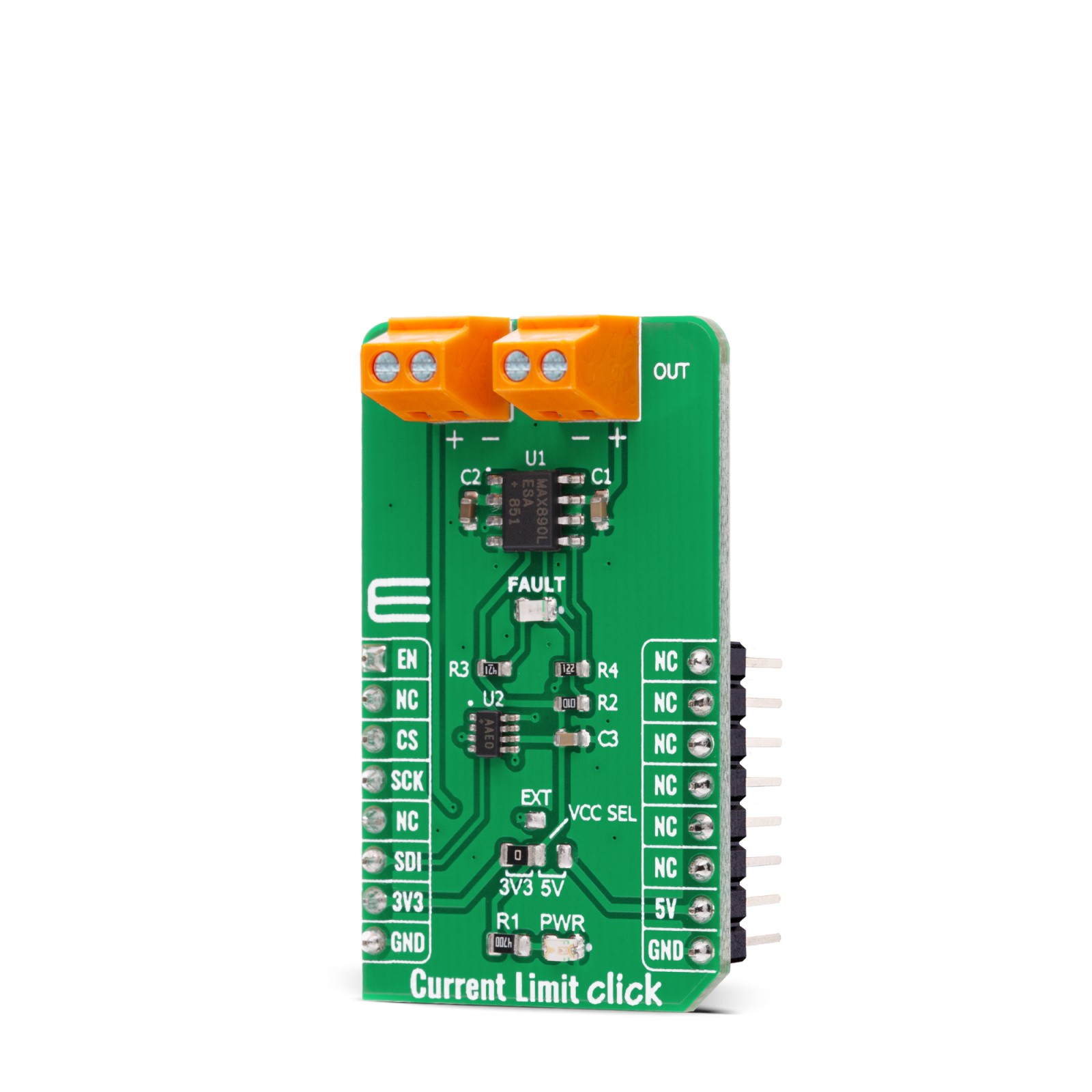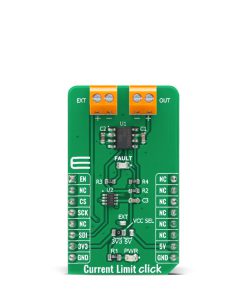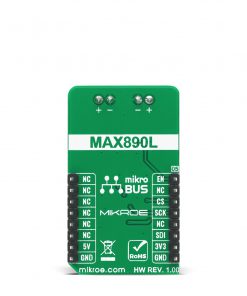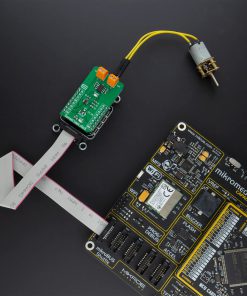Current Limit Click
R330.00 ex. VAT
Current Limit Click is a compact add-on board that contains a low-voltage, P-channel MOSFET power switch intended for high-side load switching applications. This board features the MAX890L, a low-resistance power switch with the adjustable, accurate current limit system, and thermal shutdown from Analog Devices. Its internal current-limiting circuitry protects the input supply against overload, while thermal protection limits power dissipation. The maximum current limit is 1.2A and can be programmed through a digital potentiometer MAX5401. The quiescent supply current has a low value of 10μA in the active state, while in its off state the supply current decreases to 0.1μA. This Click board™ is suitable for applications in some portable equipment, access bus slots, or with power supplies, protecting them in cases of a short circuit or other overload conditions.
Current Limit Click is supported by a mikroSDK compliant library, which includes functions that simplify software development. This Click board™ comes as a fully tested product, ready to be used on a system equipped with the mikroBUS™ socket.
Stock: Lead-time applicable.
| 5+ | R313.50 |
| 10+ | R297.00 |
| 15+ | R280.50 |
| 20+ | R269.94 |
























